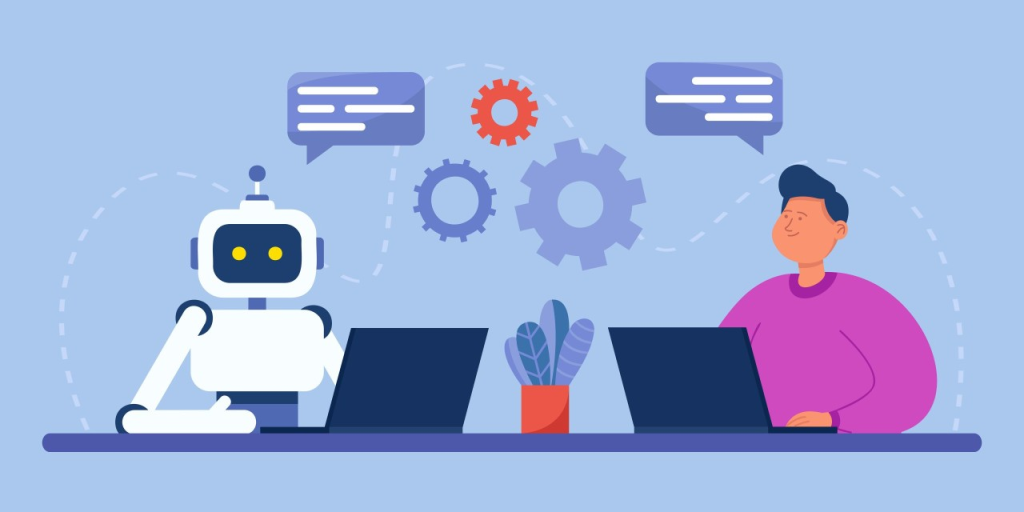In the digital age of e – commerce, providing excellent customer service is crucial for business success. AI chatbots have emerged as a revolutionary tool, transforming the way e – commerce companies interact with their customers. Let’s explore the significant impact these chatbots have on e – commerce customer service.

I. The Basics of AI Chatbots in E – Commerce
A. What are AI Chatbots?
- Automated Communication Tools
AI chatbots are automated programs that can communicate with customers in a human – like way. They use artificial intelligence and natural language processing (NLP) to understand customer queries and provide relevant responses. For example, on an e – commerce website, a chatbot can answer questions about products, shipping, and returns. - Available on Multiple Platforms
These chatbots are accessible on various platforms, including e – commerce websites, mobile apps, and social media. Customers can interact with them wherever they are shopping. For instance, a customer can use a chatbot on an app to ask about a product’s availability while on the go.
B. How AI Chatbots Work
- Natural Language Processing (NLP)
NLP is a key technology for chatbots. It allows them to analyze the words, grammar, and context of a customer’s message. For example, if a customer asks, “I’m not sure if this size will fit me,” the chatbot can understand the concern and provide appropriate advice on sizing. - Machine Learning Algorithms
Chatbots also use machine learning algorithms. They learn from each interaction with customers, improving their ability to answer questions accurately over time. For example, if many customers ask about a specific product’s features, the chatbot can remember and provide more detailed answers in the future.
II. Positive Impacts of AI Chatbots on E – Commerce Customer Service
A. Faster Response Times
- Instant Replies
One of the most significant benefits is the ability to provide instant replies. In e – commerce, customers expect quick answers. AI chatbots can respond to inquiries within seconds. For example, when a customer asks about the delivery time of a product, the chatbot can quickly check the system and give an estimated date. - 24/7 Availability
Chatbots are available around the clock. E – commerce operates globally, and customers from different time zones may need assistance at any hour. A chatbot can answer questions even in the middle of the night, ensuring that customers don’t have to wait for business hours to get help.

B. Improved Customer Experience
- Personalized Interactions
AI chatbots can offer personalized interactions. They can analyze a customer’s browsing history, purchase behavior, and preferences. For example, if a customer has previously bought running shoes, the chatbot can recommend related products like running socks or sports drinks. - Consistent Service Quality
They ensure consistent service quality. All customers receive the same accurate information and support. Whether it’s a new customer or a regular one, the chatbot will provide the same level of service, reducing the risk of inconsistent answers from human agents.
C. Cost Savings for E – Commerce Companies
- Reduced Staffing Requirements
By using chatbots, e – commerce companies can reduce their need for a large number of human customer service representatives. Chatbots can handle a significant portion of routine inquiries, such as those about product availability or return policies. This leads to cost savings in terms of salaries and training. - Efficient Resource Allocation
Companies can allocate their human resources more efficiently. Human agents can focus on more complex issues that require human judgment and empathy, while chatbots handle the simpler, repetitive tasks. For example, a human agent can deal with a customer’s complex complaint, while the chatbot answers basic product questions.
III. Potential Challenges and Solutions of AI Chatbots in E – Commerce
A. Understanding Complex Queries
- Limitations in NLP
Despite their capabilities, AI chatbots may struggle with understanding complex or ambiguous queries. For example, a customer might ask a question in a very creative or unclear way, and the chatbot may not be able to provide a useful answer. - Solution: Continuous Improvement
To overcome this, e – commerce companies need to continuously improve their chatbots’ NLP capabilities. They can use more data to train the chatbots and update their knowledge bases regularly. For example, adding more examples of complex questions and their answers to the chatbot’s training data.
B. Building Trust with Customers
- Lack of Human Touch
Some customers may feel that interacting with a chatbot lacks the human touch. They may prefer to talk to a human agent, especially when they have a sensitive or emotional issue. - Solution: Hybrid Models
E – commerce companies can adopt hybrid models that combine chatbots with human agents. For example, the chatbot can handle the initial interaction and then transfer the conversation to a human agent if the customer requests it or if the issue is too complex for the chatbot to handle.
C. Data Security and Privacy
- Risks of Data Breach
Chatbots handle a lot of customer data, including personal information and purchase history. There is a risk of data breaches, which can damage the company’s reputation and violate customer privacy. - Solution: Robust Security Measures
Companies need to implement robust security measures to protect customer data. This includes encryption, regular security audits, and strict access controls. For example, encrypting customer data during transmission and storage to prevent unauthorized access.

In conclusion, AI chatbots have a profound impact on e – commerce customer service. They offer numerous benefits such as faster response times, improved customer experience, and cost savings. However, they also come with challenges that need to be addressed. By understanding these impacts and challenges, e – commerce companies can make the most of AI chatbots and provide better customer service in the digital marketplace.





